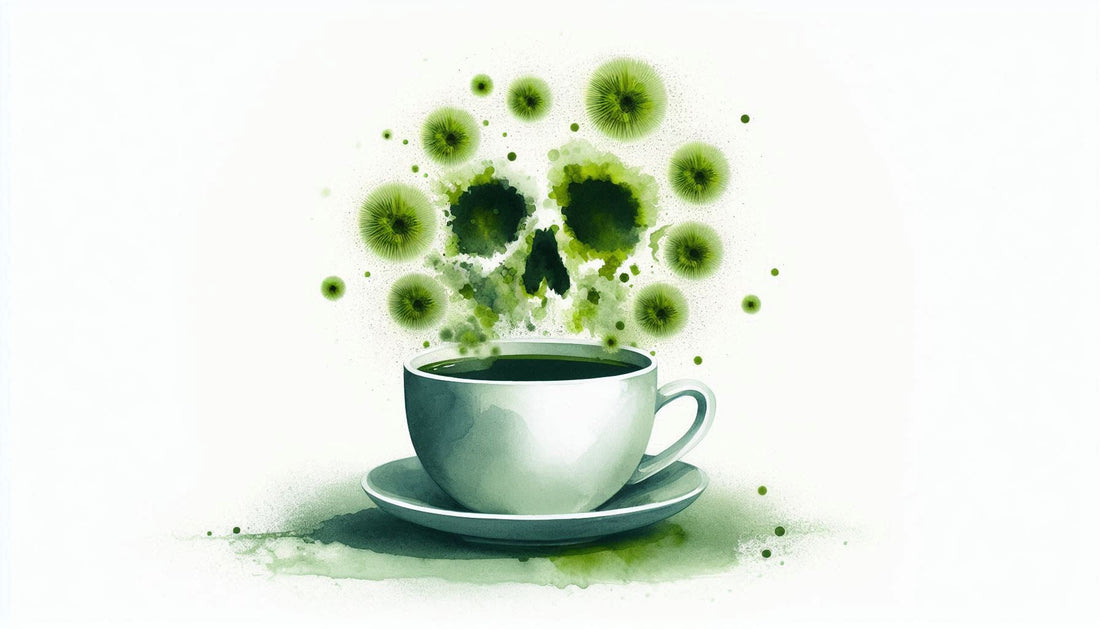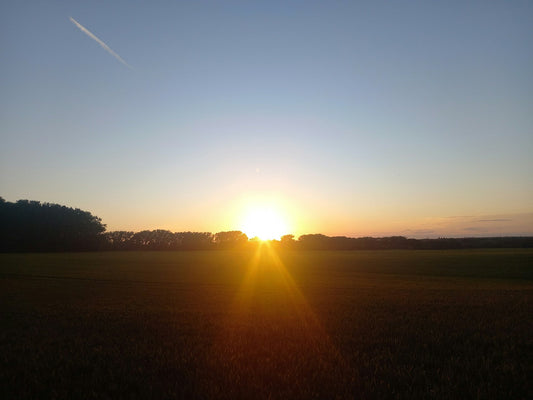
Fatal Fungi: Should You Really Be Hunting for Mold-Free Coffee?
Share
The Buzz About Mold in Your Brew
Your morning coffee is a cherished ritual. Lately, however, a new concern has been brewing – the idea that your coffee might contain harmful mold. This topic has sparked conversations, often fueled by online discussions and marketing from certain coffee brands. It's natural to be concerned, so let's look at the facts.
Mycotoxins 101: Understanding the "Mold" Concern
Molds are microscopic fungi, and some can produce toxic compounds called mycotoxins under specific conditions. The main mycotoxins discussed in relation to coffee are Ochratoxin A (OTA), a potential kidney toxin and possible carcinogen, and Aflatoxins, which are potent carcinogens.

Microscopic image of mycotoxin fungus.
Mycotoxin contamination is primarily a concern with green, unroasted beans, as mold needs moisture to thrive. Contamination can occur during growing, harvesting, drying, storage, or processing if conditions are not optimal, particularly with high moisture and humidity. For instance, improper or slow drying is a major risk factor. Wet-processed (washed) coffees generally carry a lower risk of mold growth compared to dry-processed ones if the latter are not meticulously managed.
It's important to remember that mycotoxins aren't unique to coffee; they can be found in many agricultural products like grains, nuts, and dried fruits.
Is it a Genuine Health Danger?
While mycotoxins can be harmful at high levels, the crucial question is about the amounts typically found in coffee. Regulatory bodies like the European Union have set strict safety limits for OTA in coffee (e.g., 5 parts per billion in roasted coffee).
Numerous studies and expert assessments suggest that for most people, exposure from coffee is very low. For example, one estimate suggests that drinking four cups of coffee daily contributes only about 2% of the OTA exposure level deemed safe by the FAO/WHO. The average adult would need to consume hundreds of cups every day to exceed safety levels. The scientific consensus is that the levels typically found in commercially available coffee are generally far too low to pose a significant health risk to the average consumer.
How We Ensure Quality

Loading green coffee beans into the hopper of our roaster.
At True Grind Coffee, we're committed to providing you with the highest quality and safest coffee. We believe that proactive measures throughout the coffee's journey are key.
- Starting with the Best Beans: We exclusively use specialty grade coffee. These are high-quality beans that score over 80 points on the Specialty Coffee Association (SCA) scale. The rigorous grading process for specialty coffee inherently penalizes defects like mold, meaning these beans are at a very low risk for containing harmful levels of mycotoxins. In fact, it's estimated that up to 99% of specialty-grade coffee can be considered free of significant mold and mycotoxin levels.
- Climate-Controlled Storage: The journey of our beans to your cup includes careful handling. Green coffee beans are susceptible to mold if stored in warm, humid conditions. That's why we store our precious green coffee beans in our climate-controlled roastery. Maintaining optimal temperature and humidity is crucial to prevent any mold growth before roasting.
- The Power of Roasting: Roasting is a critical step that significantly reduces any potential mycotoxins. The high temperatures (over 400 °F) kill molds and degrade a substantial portion of mycotoxins like OTA, with reductions reported from 69% up to 96%. This process is a powerful safeguard.
What Experts Say
The prevailing view among food scientists and health organizations is that mycotoxin levels in commercially available coffee are generally well below safety thresholds and unlikely to harm average, healthy individuals. Many experts view "mold-free" marketing with skepticism, suggesting it can exploit consumer fears, as standard good practices already keep risks very low.
Tips for Coffee Lovers
For most healthy individuals, actively seeking out coffee specifically labeled "mold-free" isn't necessary if you're choosing quality. Instead:
- Choose Quality Beans: Opt for specialty grade coffee from reputable roasters like True Grind Coffee. Our commitment to specialty grade beans is your first line of defense.
- Proper Storage at Home: Once you bring your coffee home, store your beans or grounds in a cool, dark, dry place in an airtight container (the original bag is perfect) to maintain freshness and prevent any unlikely post-purchase mold growth.

Kitchen cabinets are a great place to store your coffee to keep it fresh.
Conclusion: Enjoy Your True Grind Coffee with Confidence
While the concern about mold in coffee is understandable, the science and industry best practices provide strong reassurance. The risk from mycotoxins in high-quality, well-processed, and properly roasted coffee is minimal for most people. So, brew your favorite True Grind Coffee with peace of mind. Armed with this knowledge, you can confidently enjoy every sip.
Further Reading
- Mycotoxins Myth: The Truth About Mold in Coffee - Healthline
- What You Should Know About Mold in Coffee - Everyday Health
- Behavior of Ochratoxin A during Green Coffee Roasting and Soluble Coffee Manufacture
For more coffee tips and updates from True Grind, be sure to join our mailing list below!




